
‘Ken Russell was so often called rude names – the wild man of British cinema, the apostle of excess, the oldest angry young man in the business – that he gave up denying it all quite early in his career. Indeed, he often seemed to court the very publicity that emphasised only the crudest assessment of his work. He gave the impression that he cared not a damn. Those who knew him better, however, knew that he did. Underneath all the showbiz bluster, he was an old softie. Or, perhaps as accurately, a talented boy who never quite grew up.
‘It has, of course, to be said that he was capable of almost any enormity in the careless rapture he brought to making his films. He could be dreadfully cruel to his undoubted talent, almost as if he was defying himself, let alone those who supported him. The truth was that, when he deliberately reined himself in, as he did in 1989 with an adaptation of DH Lawrence’s The Rainbow (as a sop to financiers who thought he was too much of a risk), he could be rather dull.
‘That he regarded as an almost mortal sin. “Wake ’em up” was generally his watchword, and it was certainly true that you could seldom go to sleep in a Russell film. If you did, you had nightmares. Sex loomed large in many of them since he felt it was the mainspring of most things, and generally covered or tidied up by latterday English hypocrisy. Though he was undoubtedly no advocate of the proverbial British good taste, once exemplified in the cinema by beautifully suppressed emotion and clipped middle-class accents, he was never quite the strange and hairy monster determined to scandalise the bourgeoisie or, at the very least, to exemplify everything that’s foreign to the steadier British temperament.
‘He was much more like one of the last of the great British romantics, whose roster included Michael Powell. Much of Powell’s work also attempted to cut through the conventional treatments of controversial subject matter and expose the often boiling passions underneath. For this, Powell was frequently attacked – Peeping Tom being so badly mauled that it almost ruined his career. So was Russell, and most would say with better reason. Regularly set upon as vulgar, crude and deliberately shocking, he was never best friends with the British film critics. He once called me, after a favourable review, “the best of a very bad lot”.
‘In 1963 he made his first film, an underrated offbeat comedy, French Dressing, and, four years later, a thriller, Billion Dollar Brain, taken from Len Deighton’s novel and starring Michael Caine as Harry Palmer. His first real commercial success came in 1969 with his version of Lawrence’s Women in Love. Its fireside nude wrestling scene with Oliver Reed and Alan Bates jolted a good many, including apparently the actors themselves and a nervous censor, but the film brought Russell an Oscar nomination and made him a director to be reckoned with. Hollywood took note, but it was a long time before he took note of them. After the freedom Wheldon had given him, he was not best pleased by the relatively uncultured suits he found on visits to the west coast.
‘There followed a stream of films: The Music Lovers (1970), a swingeing account of the gay composer Tchaikovsky’s marriage and death, which starred Richard Chamberlain in the lead role and certainly helped his co-star Glenda Jackson into worldwide prominence; The Devils (1971), an interpretation of Aldous Huxley’s The Devils of Loudun that contained some of Russell’s most brilliant and audaciously cinematic work but was cut by Ted Ashley of Warner Bros, who didn’t like such things as nuns masturbating at representations of Christ on the cross; The Boy Friend (1971), a musical based on Sandy Wilson’s successful stage production and paying homage not just to Wilson but also to the choreographer Busby Berkeley; Savage Messiah (1972), about the tempestuous life of the sculptor Henri Gaudier-Brzeska; and Mahler (1974), a fictionalised biography starring Robert Powell as a very neurotic composer. Many of these were criticised for factual inaccuracies, but the point of most of them was that Russell intended them to be psychological fantasias rather than biographies.
‘During this time, Russell became not only the most controversial British director but also the first in the history of British film to have three films playing first-run engagements in London simultaneously – The Music Lovers, The Devils and The Boy Friend. But his reputation as a kind of unruly cinematic anarchist, capable of frightening even the horses and doubtless making some of his subjects swivel in their graves, tended to cloud the formidable technique he brought to everything he did. In most of them there were some extraordinary passages. It might have been better if there had been a few more ordinary ones as well.’ — The Guardian
___
Stills
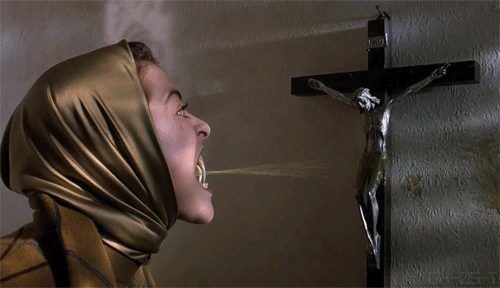

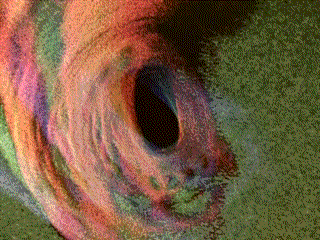
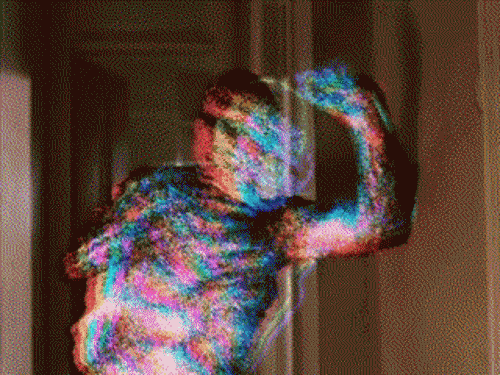



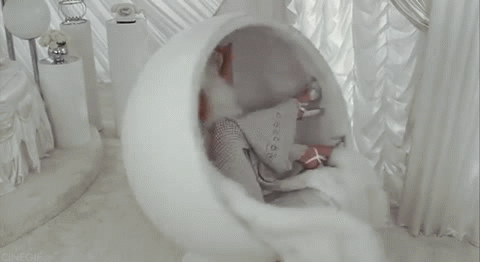
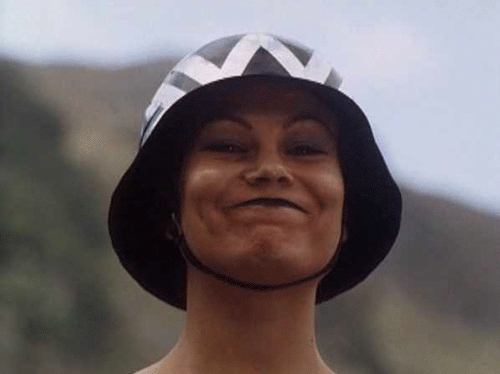

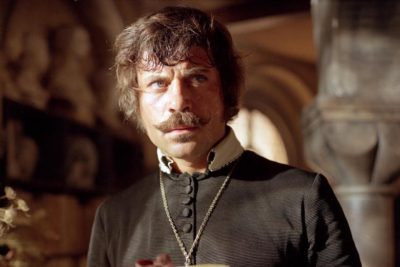







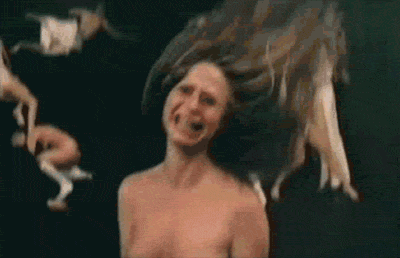
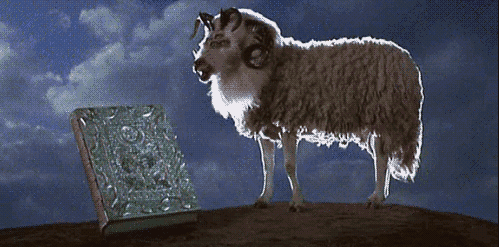
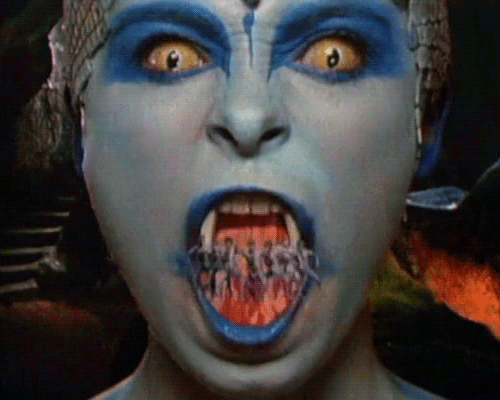






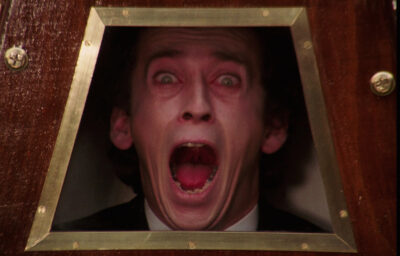










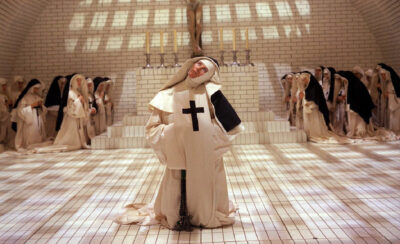



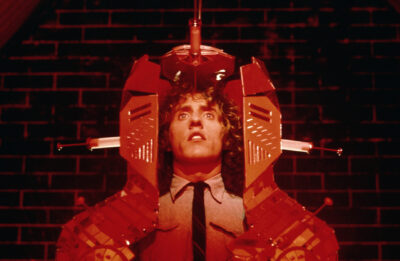








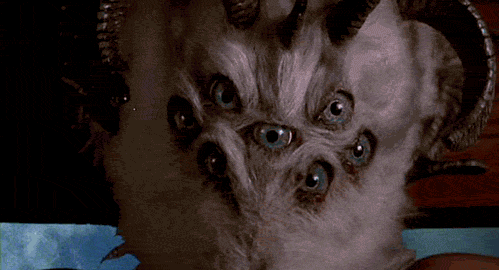
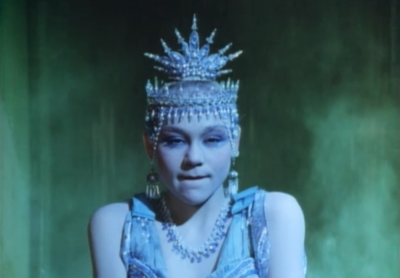
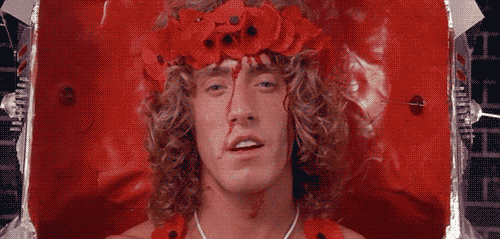
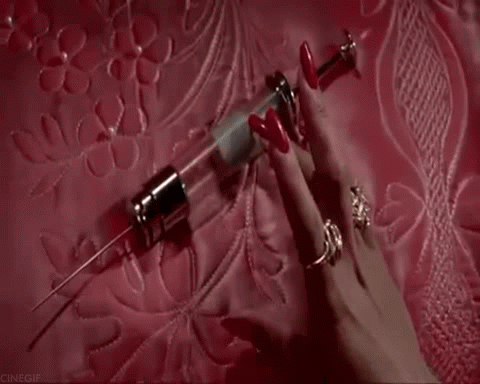
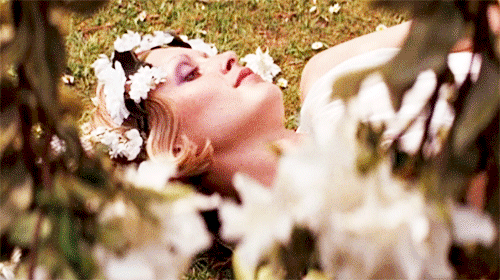

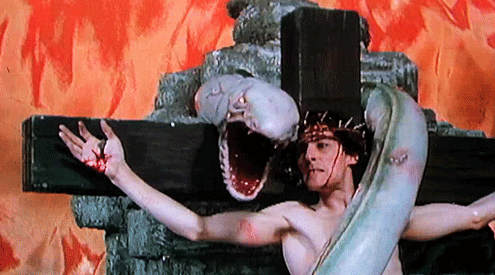
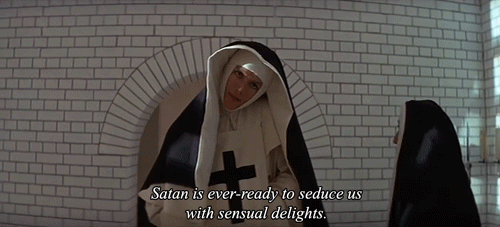
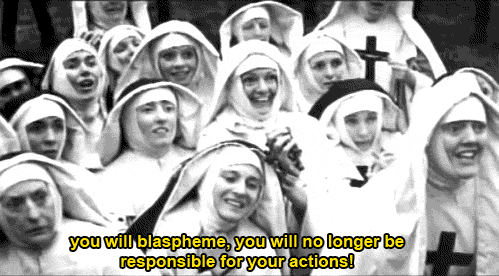
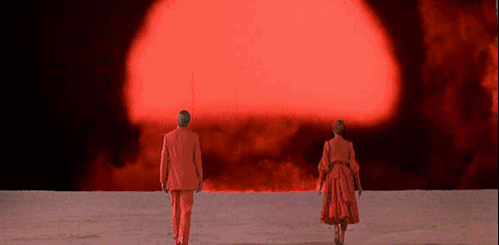








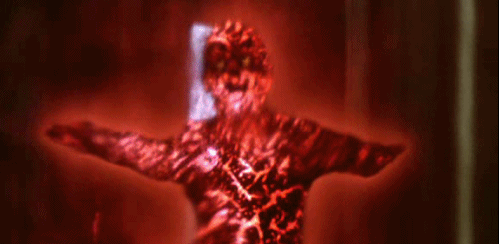
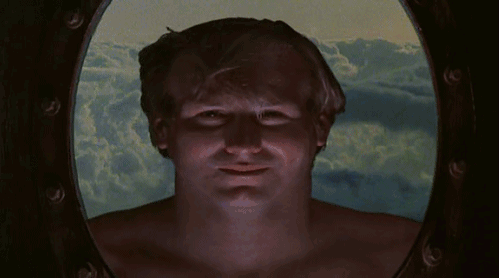
_____
Further
Savage Messiah, a Ken Russell site
Ken Russell @ IMDb
‘Ken Russell: A Bit of a Devil
fuck yeah ken russell
Ken Russell: Offscreen
‘Goodbye Uncle Ken’
Book: ‘Raising Hell: Ken Russell and the Unmaking of The Devils’
1970 interview w/ Ken Russell @ Film Comment
‘The Secret Career of Ken Russell’
Ken Russell @ mubi
‘Ken Russell: The Rare Director Who Understood Musical Greatness’
‘The Pope still loathes Ken Russell’s The Devils, and with good reason’
The Ken Russell Appreciation Society
Ken Russell interviewed @ Garageland
‘Ken Russell’s Female Fugue’
‘The Ken Russell Aussie film that never was’
____
Extras
Director of Devils
Ken Russell interviewed
Ken Russell on Federico Fellini
Ken Russell’s Christmas Movie
Peepshow – Short by Ken Russell (1956)
Ken Russell A Bit of a Devil
_______
Interview
from Empire Magazine
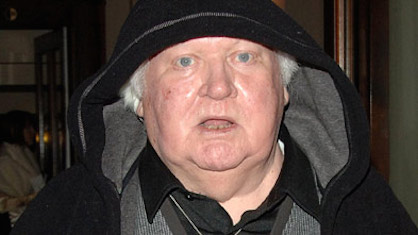
When was the last time you walked out of a movie?
I walked out of Pulp Fiction. Shortly after the hypodermic needle was driven through the heroine’s heart. I thought the sadistic smile of pleasure on the faces of all the members of the cast was just too gross for words.
What’s your idea of heaven on earth?
Where I live. But I won’t tell you where it is because everyone will want to go there.
Do you think Hollywood is full of big babies?
And old babies.
Is there a phrase which you over use?
Thank-you.
What did you dream of last night?
I can never remember my dreams any more, unfortunately, but they are always spectacular.
How far is too far?
Not far enough.
When was the last time you were naked in the open air?
Yesterday by myself when I was watering the garden. It was a lovely hot day and my garden is totally secluded, miles anyway from anywhere, but all the birds and the bees were having a good look.
Have you ever had a supernatural experience?
Most days.
Have you ever worn a dress?
Several times.
Who is the person you most despise?
I’ve given up despising people; it takes so too much out of you. I find liking people is taking over.
What is the worst crime you ever committed?
Hitting my children, I think. Not often, but I shouldn’t of hit them once. With a gold club.
Would you eat human flesh if your life depended on it?
I sure would… probably have.
Where is your Achilles heel?
In the usual place.
How many notches do you have on your bedpost?
I don’t have bedposts.
Do you have any notches anywhere else?
I don’t have a long memory.
Where do you go to when you die?
Heaven.
Back to your house?
Exactly. I shall haunt it for thousands of years.
____________________
20 of Ken Russell’s 24 films
_________________
Billion Dollar Brain (1967)
‘Harry Palmer (Michael Caine) is located as his disheveled London office is searched by a white-gloved POV shot, a Humphrey Bogart portrait is pinned next to a Dolly Read centerfold; Col. Ross (Guy Doleman) promptly dispatches him to Latvia on a mission, the McGuffin is a Thermos bottle full of virulent eggs, the Richard III opener is appropriated as password. The dizzying pile-up effect is the intent of Ken Russell, who takes over the secret-agent franchise and takes the piss out of it, Karl Malden naked in a snowbound sauna guffawing “Don’t be so British!” to his bashful guest — it’s not a matter of whittling the genre for the art in it (A Dandy in Aspic) or purposefully degrading it into clarity (Modesty Blaise), but of recognizing its Pop Art impudence and zipping through, smacking every gag.’ — cinepassion.org
the entirety
Opening titles
_____________
Women in Love (1969)
‘One Russell effort stands quite alone, in both subject matter (a D. H. Lawrence novel) and public approval — the 1969 Women in Love. This is a quite faithful adaptation, by the film’s producer, Larry Kramer, of Lawrence’s 1920 novel about the complexities two diverse young English couples encounter in their expression of love and friendship. To date, Ken Russell hasn’t made a better movie than Women in Love, a fact which he characteristically disputes. With reference to the critics who have treated his output with increasing severity, Russell says, “Women in Love was easier for them. It was literal and had just the right amount of violence and erotic things in it. But I don’t think it was as good as the others.”‘ — alanbates.com
Trailer
Excerpt
Excerpt
________________
The Music Lovers (1970)
‘The Music Lovers is an extended 1970 fever dream on Tchaikovsky’s sexual torment that opens in medias res with a wordless scene of lushly scored winter revelry. In a favored Russell technique, single events—like a public recital wracked with excitement and insecurity—are elongated by long fantasy sequences, and whole stretches of images seem pushed and pulled along before our eyes by projected desires and anxieties. Cutting himself off from a secret relationship with a count, Tchaikovsky convinces himself to accept the fanaticism of an admirer (Jackson, a Russell axiom), and weds to pursue a new fantasy. As the composer-conductor, Richard Chamberlain looks like he might shiver into pieces.’ — The Village Voice
Trailer
Excerpt
_____________
The Devils (1971)
‘Inspired by actual events, and combining strong and disturbing elements of historical drama, religion, sex, music, politics and horror, The Devils is masterful, and is unlike anything that the British film industry had produced up until that time. The ferocity of Russell’s vision represents a kind of multicoloured artistic purging, with close to two hours of invention, energy and madness loaded into a blunderbuss and fired onto the screen in shocking, blasphemous glory. Unsurprisingly, The Devils attracted great controversy on its initial release (the original US trailer seems acknowledge the film’s controversial nature, with a voiceover that exercises damage limitation by proclaiming that The Devils is “not for everyone”), and a portent of the trouble that would lay ahead came when horrified US studio executives, upon first seeing the film, told Russell it was ‘disgusting shit’.’ — Pop Matters
Trailer
Excerpt
the entirety
________________
The Boy Friend (1971)
‘The fact that the film is considered “slight”—in other words, has no particularly deep meaning and is simply intended to be fun—has caused The Boy Friend to be considered a lesser Ken Russell film in a lot of quarters, which is a great pity. It is actually a film of considerable complexity in that it interweaves a great many storylines into its overall fabric. The characters all have considerable depth—or at least the illusion of it—and virtually nothing happens in the film that isn’t ultimately functional to the plot. Even things that seem like complete digressions—Tommy (Tommy Tune) recounting his life story (with a nod to Potemkin in it), for example, are part of an ultimately tight narrative. It’s also interesting that Russell managed to make two of the girls—Fay (Georgina Hale in her second of six Russell appearances) and Maisie (Antonia Ellis in her first of two Russell films)—a lesbian couple in such a way that the MPAA never noticed.’ — Mountain XPress
Trailer
Excerpt
Behind the scenes
________________
Savage Messiah (1972)
‘Russell seems to fly into his films full-tilt, and I picture him sometimes with steam and sparks jetting from his ears. His movies are almost always paced just this side of frenzy, and his characters mostly seem to be on speed. This can be as tedious, in its way, as the use of a very slow pace, but sometimes it works. For Russell, early in his career, it worked in Women in Love (1969) and again in 1972 with Savage Messiah. This is another movie, like Russell’s awful The Music Lovers, about genius, art and the act of creation. What makes it work so much better than The Music Lovers is that Russell is mostly willing to stay out of his subjects’ minds and let us see and hear them instead.’ — Roger Ebert
Trailer
Excerpt
_________
Mahler (1974)
‘The film is structured around a train ride Gustav (Robert Powell) and his wife, Alma (Georgiana Hale), are taking, during what we come to discover will actually be among the last days of his life (Mahler died in 1911, a month from his 51st birthday). Already quite sickly, and in active denial of it, he’s plunging forward, oblivious to the path that has been more or less set for him. Don’t worry, kids, this is still a crazy Ken Russell film. The opening scene, in which Alma, completely nude, wrestles her way out of a sort of thick webbing, rather urgently establishes two important things – first, that Alma is as much the protagonist of this film that her more famous, titular husband, and second, that this isn’t just going to be two hours on a train, but an experience in which the past, present, imagined future, and total fantasy will roll together to create the kind of total portrait that no element on its own could fulfill.’ — criterioncast.com
Excerpt
the entirety
________
Tommy (1975)
‘Although in criticising Russell’s lack of discipline people tend to forget that he was virtually the first film-maker to escape the strictures of realism and telestyle that have dogged British cinema since the heyday of Powell and Pressburger, it must nevertheless be admitted that watching his more excessive movies tends to be a wearisome experience. The Who’s ludicrous rock opera was in fact tailor-made for the baroque, overblown images and simplistic symbolism of Russell’s style, which only means that this is both the movie in which he is most faithful to the ideas and tone of his material, and one of his very worst films.’ — Time Out London
Trailer
Cousin Kevin scene
Acid Queen scene
____________
Lisztomania (1975)
‘Lisztomania: the most embarrassing historical film ever made? Wagner as Hitler, Ringo Starr as the pope, and an anatomical anomaly that suggests an unfortunate mishearing – this film just gets worse and worse. Wagner – dressed, in a painful literalisation of Friedrich Nietzsche’s Thus Spake Zarathustra, as Superman, complete with red cape – strums an electric guitar and sings about restoring the Teutonic godhead. This isn’t an attempt at historical accuracy: just an alarming glimpse into director Ken Russell’s mind. Or possibly he misheard someone describing Liszt as Europe’s biggest pianist. Lisztomania may be the most embarrassing historical film ever made.’ — The Guardian
Trailer
Excerpt
___________
Valentino (1977)
‘The film topped the British box-office for two weeks, but was not a hit in America. Upon its release there, Valentino was a commercial and critical failure. The film garnered mixed reviews, most generally negative. The Village Voice called the film “so embarrassingly and extensively bad that it achieves a kind of excruciating consistency with the rest of his [Russell’s] career.” Charles Champlin of The Los Angeles Times dismissed the film as “superficial and silly”. The majority of the negative criticism stemmed from Russell’s blending of fact and fiction. Russell defended his actions stating, “I only want to be accurate up to a point. I can be as inaccurate as I want — it makes no difference to me. I’m writing a novel. My films are novels, based on a person’s life, and a novel has a point of view.” Despite its general negative reception, some critics and scholars liked and respected the film. Russell later stated that he would rather forget Valentino.’ — collaged
Excerpt
Excerpt
______________
Altered States (1980)
‘Altered States, about a scientist who is his own favorite guinea pig, is the first Ken Russell movie with psychedelia for its subject – but it is certainly not Mr. Russell’s first psychedelic movie. If anything, Mr. Russell’s other work has had a hallucinogenic quality all its own. His best films have been giddy, kinetic and half crazy without even trying to be. Altered States, which does try, is more like a methodically paced fireworks display, exploding into delirious special-effects sequences at regular intervals, and maintaining an eerie calm the rest of the time. If it is not wholly visionary at every juncture, it is at least dependably – even exhilaratingly – bizarre. Its strangeness, which borders cheerfully on the ridiculous, is its most enjoyable feature.’ — NY Times
Excerpt
Excerpt
________________
Crimes of Passion (1984)
‘Even though Crimes of Passion is only the fourth Ken Russell film that I’ve seen, it’s actually only the second film of his that I’ve watched utilizing the entirety of my face. While I can’t really explain how a normal person goes about watching something with the total sum of one’s face, take my word for it, Ken Russell directs the kinds of films that require them to be watched in this particular manner. Interspersed with a dizzying array of unusual stylistic choices, the kind that no sane director would ever dare implement, Mr. Russell, whether injecting the paintings of Aubrey Beardsley and John Everett Millais into his sex scenes or having a scene where a bland suburban couple watch a surreal music video that mocks materialism, seems totally unafraid to skewer society’s puerile views on sex.’ — House of Self-Indulgence
Trailer
Excerpt
________
Gothic (1986)
‘For better and worse, Gothic‘s hallucinatory structure allows director Ken Russell to jettison narrative coherence and focus on what interests him: filling his frame as full of images of knights with giant pointy phalluses, stripteasing Turkish automatons, self-stigmatizing masochists, all-seeing bosoms, and naked girls covered in muck chewing on rats as he can think of. This is a very bad thing if you go into Gothic looking for some insight into the creative processes of Romantic poets and novelists, and potentially a very good thing if you just like to see Russell going hog wild, shamelessly playing out his psychedelic sex fantasies with typical campiness against a luxurious, decadent background.’ — 366 Weird Movies
Excerpts
_________________
Salome’s Last Dance (1988)
‘What do we learn from this film? Not much, except that Russell is addicted, as always, to excesses of everything except purpose and structure. After his previous film, Gothic, which re-created a weekend idyll involving Shelley and Byron, Russell demonstrates again that he is most interested in literary figures when their trousers are unbuttoned. And even then, he isn’t interested in why, or how, they carry on their sex lives; like the defrockers of the scandal sheets, he wants only to breathlessly shock us with the news that his heroes possessed and employed genitals.’ — Roger Ebert
Trailer
the entire film
__________________
The Lair of the White Worm (1988)
‘Let this much be said for Ken Russell’s The Lair of the White Worm: It provides you with exactly what you would expect from a movie named The Lair of the White Worm. It has a lair, it has a worm, the worm is white and there is a sufficient number of screaming victims to be dragged down into the lair by the worm. Russell provides you with your money’s worth. Why he would have wanted to make this film is another matter. This is the kind of movie that Roger Corman was making for American-International back in the early 1960s, when AIP was plundering the shelves of out-of-copyright horror tales, looking for cheap story ideas.’ — collaged
Trailer
Excerpt
the entirety
________
Whore (1991)
‘Whore is not about a world where the heroine can do anything with her days except try to pull herself together after the night before. The movie is based on a play called “Bondage,” written by a London taxi driver named David Hines, who based it on the stories told to him by hookers who hailed his cab late at night. It has been moved from London to Los Angeles, and the screenplay has been written by director Ken Russell and Deborah Dalton, who produced a radio series on prostitution. Whore has been given the NC-17 rating. Pretty Woman, of course, got an R. Ken Russell has complained that the ratings system is penalizing his movie because it tells the truth, after rewarding Pretty Woman for glamorizing prostitution. He may have a point, but then again Pretty Woman was about a character who lived in an R-rated world, and Whore is about a woman who lives in the real one.’ — collaged
Trailer
Excerpt
the entirety
_____________
Mindbender (1996)
‘If you are interested in bending spoons this is one of the best films on the subject. The life story of Uri Geller. The credits begin with “the following events are true and are interpreted through the artistic eye of Ken Russell”. Uri’s father and lover dance on top of an Israeli tank beside a 3-dimensional Dali-clock. The child Uri pulls a bullet out of a wall (the six day war recurs in the film) and when he holds it in his hand it turns into a ring. When his teacher tells Uri to stay in class until the hands of the clock reach half past four, of course young Uri has no problems moving the hands and leaving early. But this sort of thing is really banal and the films comes over as a paid-for vanity film for Uri Geller. There is a silly spy plot and Geller seems to save the world from nuclear war.’ — Iain Fisher
the entirety
_____________
Elgar – Fantasy of a Composer on a Bicycle (2002)
‘Back in 2002, Melvin Bragg asked Ken Russell to do a little something to mark the 25th season of The South Bank Show. Mr Russell decided to remake the drama documentary that he had first done in 1962 for the BBC’s Monitor program.’ — gamesvideoreview.net
the entire film
___________
A Kitten For Hitler (2007)
‘Russell told me A Kitten for Hitler was inspired by a discussion about censorship with his friend and one-time collaborator (The Music Lovers, The Debussy Film) Melvyn Bragg—the author, broadcaster and editor of legendary arts series The South Bank Show. Russell had suggested there were some films that shouldn’t be made—as he later explained in the Times newspaper in 2007: “Ten years ago, Melvyn Bragg and I had a heated discussion on the pros and cons of film censorship. Broadly speaking, Melvyn was against it, while I, much to his surprise, was absolutely for it. He then dared me to write a script that I thought should be banned. I accepted the challenge and a month or so later sent him a short subject entitled A Kitten for Hitler. ‘Ken,’ he said, ‘if ever you make this film and it is shown, you will be lynched’.”‘ — Paul Gallagher
the entirety
____________
Boudica Bites Back (2009)
‘A cine-opera retelling of the legend of Boudica, warrior queen and her uprising against the Roman occupiers of Britain.’ — Letterboxd
Ken and Lisi Russell talk about Boudica Bites Back
*
ps. Hey. Heads up that, starting tomorrow, Zac Farley and I will be working all this week with some people to do the color correcting and sound cleaning on our new film. That may be quite time consuming and might, as a result, truncate the time I have to do the p.s. in the mornings. I’ll try to give you advance notice if that’s the case, if I can. In any case, this week’s p.s.es may not be up to my usual standards, and apologies in advance if so. ** Dominik, Hi!!! The sound guy said yes, and we’ll start working him tomorrow, whew. Yes, well, when you get tired of Vienna, I think Paris would make for a nice next homestead for you, naturally. I actually love films where nothing happens so if you did nothing this weekend, I, at least, would probably be riveted. Well, then I hope love was at his most fetching when he issued that invitation to me. Love turning himself into a huge dark cloud over Paris that thunders and issues lightning and explodes rain drops, G. ** Mark, After8 is a lifesaver if you live here and speak English and have excellent taste in book-shaped things. Yes, I think Alfred Jarry lived on that street. There must be a plaque. I’ll have to find it. Oh, wow, Stroke Magazine. That takes me back. It was kind of the best gay mag in existence in its time. It and In Touch, I guess. Very cool. Great project. You’re such a fount of great stuff, dude. ** Misanthrope, Sorry for the slam, man. And the viewing, eek. The only Open I’ve seen was a bit of Coco whatshername’s win. That was cool. So Lil D … called them … back? I trust? ** Sypha, Hi. I was into monsters and stuff big time too as a kid. I bought all the Famous Monsters of Movieland Magazines and so on. I think if Goth had been actually scary, I might have gotten into it. Christmas novel! Now you’re talking. Wow, that’s a great idea. I am that idea’s cheerleader. Cheerleading squad even. ** Steve Erickson, Dude, you are just beset. I’m terrible at pitches, so I’d be confused too, probably. I do think enthusiasm always helps. And you certainly have proven yourself as a critic/writer. Precisely, about Nyege Nyege/Hakuna Kulala. I wonder how long that can last. ** oliver jude, Top o’ the morning! November and December, noted. I’m all about winter time. That’s my metier. The storyline of your short is great! I’m already imagining it. Oh, wow, about your cam operation and assistant work. I wish Zac and I had a new film ready to shoot so we could swipe you. What’s your screenplay like if you want to say? I hope you liked ‘PGL’, obviously. ** Damien Ark, Alex’s book seems like the epitome of divisive. Usually a good thing. I’ll find ‘MOMOKO blooms in 1.26D’, thanks, man. You’re going to Japan maybe? Holy fuck! I’m dying to go to Japan. Dreams of going as soon as the film’s finished, but … I don’t know. ** Matt N., Hi, Matt. Yes, the book’s goodreads reviews are entertainment. Zac’s and my ideal post-film thing is to go to Japan, as we’re been trying to get back there for years, but that might be too ambitious. We have another project we want to start on right away — an ‘audio novel’, that is a novel that only exists as sounds. That’s already written, so we might jump into that. Oh, hm, fave John Fords … off the top of my head maybe ‘The Quiet Man’, ‘The Searchers’, ‘The Man Who Shot Liberty Valance’, ‘Stagecoach’ maybe? Yeah, Fritz Lang, nice, and exactly re: the cohesion/non-cohesion. How’s your week beginning? ** John Newton, Hi. Yes, I eat eggs. The easiest way to describe my vegetarianism is to say I eat anything that doesn’t have an asshole. Salads bore me shitless, ha ha. I don’t cook, but I think my Mexican faves are fairly basic: quesadilla, cheese gorditas, bean & cheese burritos, chile rellenos, … Vegetarian tamales are yum too. No, no ‘Sluts’ sequel. People have approached me about publishing the escort/ slave profiles as book, but the problem is I don’t have permission for the photos, and the texts need them, I think, and I can’t see publishing them in a book without permission. I do that here, and there’ve only ever been maybe two complaints in all the years I’ve done the posts, but, in a book, no. Congrats on your taxes. I, of course, spaced out again this year, oops. ** Ollie🦉, Uh, I don’t know. Alex was commenting here for a while, so maybe that’s what you’re thinking? I’m obviously glad you didn’t take imaginary Bob Dylan’s advice there. I love birds. I love them more and more. I think they’re very underrated. That’s so exciting about setting up the mausoleum thing, and, having spent plenty of time in Halloween stores, I can see exactly what you mean. Sigh. I think I know when you’re joking. I guess I don’t know for sure, of course, but I think I do, yes. You don’t sound insane, that’s for sure. ** _Black_Acrylic, Thanks, Ben. ** Caesar, Hey, Caesar! It’s really good to see you! I remember you, of course, of course. The film with Zac goes well except for the money part. We’re polishing it up right now. Haven’t had much rest ‘cos the film has been full-time, but that’s okay, I’m not pooped. Thomas Mann … wait, I think you Thomas Moore. Yes, he was here, and he snapped us. I’m so sorry about the stupid, short-sighted guy who obviously doesn’t deserve you. Wow, poetry to recommend. I’m going to have think about it briefly before I answer because I’m about to dash out the door, and my brain is already half way out the door. Tomorrow if I can, okay? Sorry. I hope sticking around here is something you’re into doing because it’s a big pleasure for me. Kisses back! ** Cody Goodnight, Hi. I’m … extremely over this heatwave we’re having and ‘praying’ it ends tonight like they’re promising. But okay otherwise. I haven’t seen that Mailer. I’ve always wanted to. Yes, I think ‘Fargo’ is a perfect film. I’ve just been working hard and constantly on the film. I’m going to be kind of a film-only bore for a bit longer. Monday? How was it? ** TJ Sandel, Hi! My pleasure, of course. I’m not 100% sure, but I think it is from the Gilles Sebhan book, yes. How are you? What’s up? ** Okay. Someone recently asked me if I would restore my blog’s old Ken Russell Day. I looked at it, and not only had it been ravaged by the internet’s evolution, but I thought it was kind of weak. So I killed it! And I made a whole new Day! And there it is! And I’ll see you in some form tomorrow.
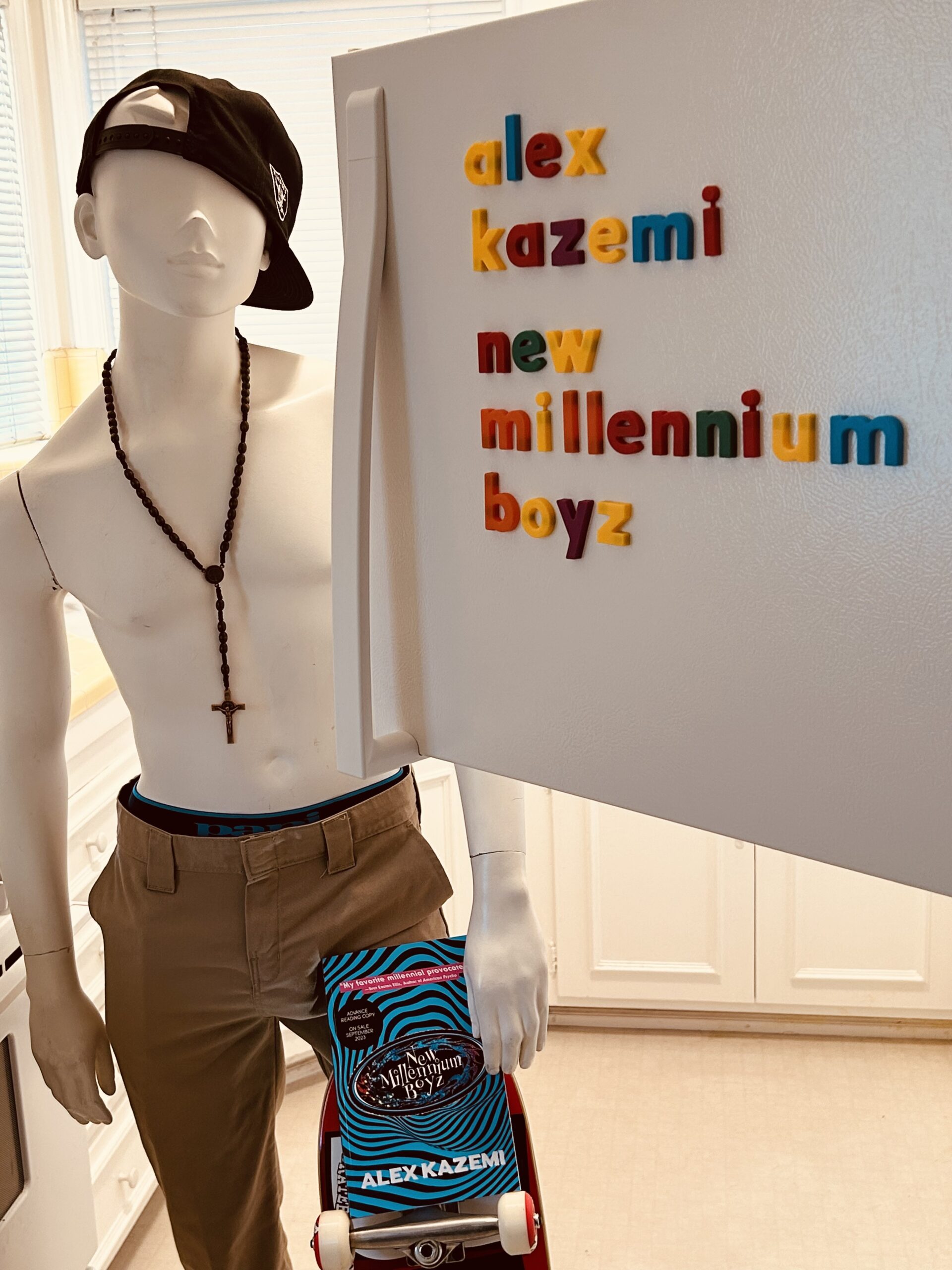

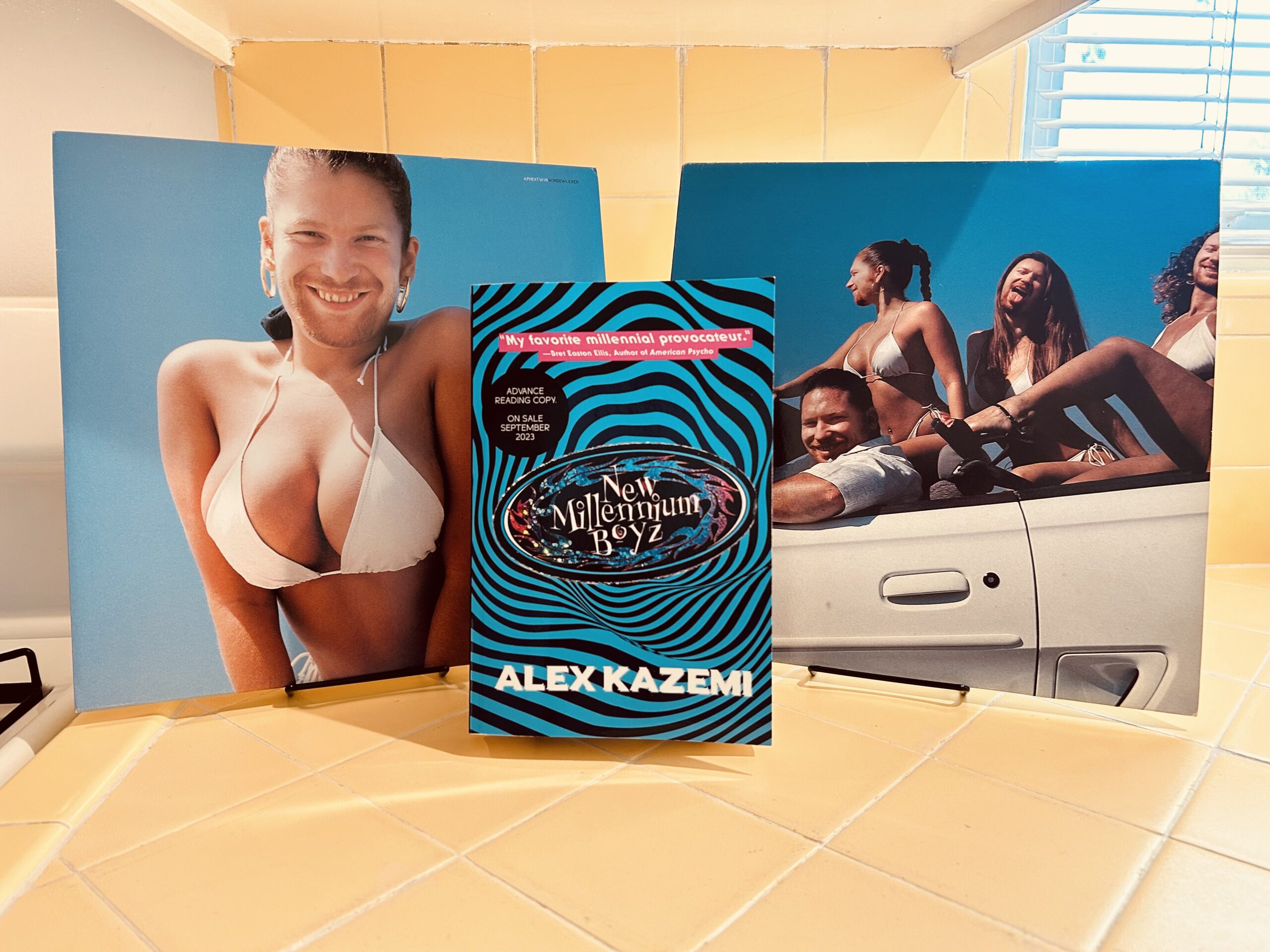













 Now available in North America
Now available in North America 